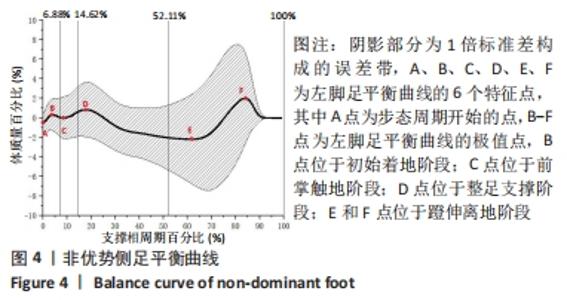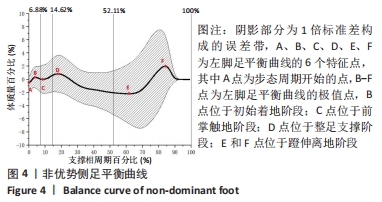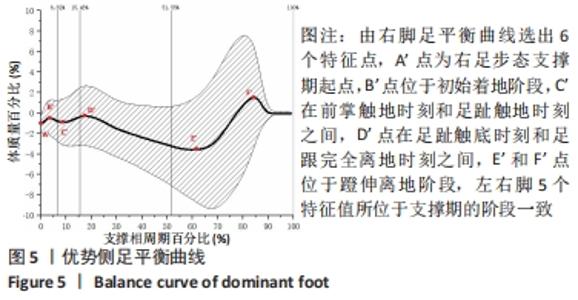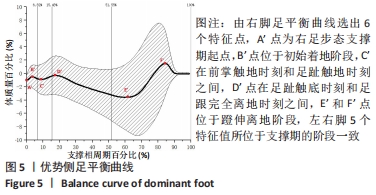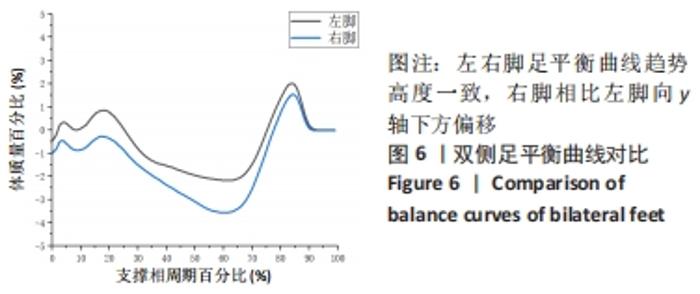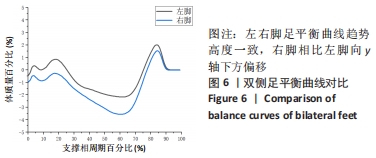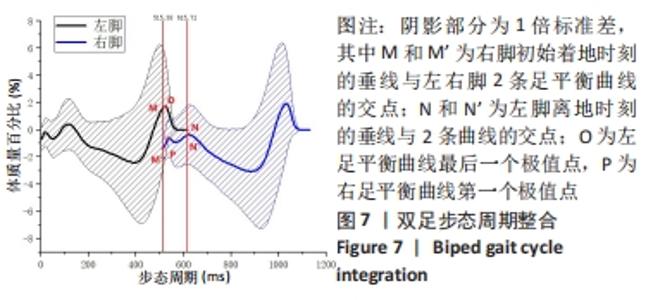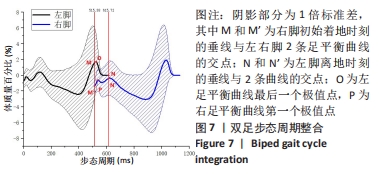[1] 詹姆斯·厄尔斯. 行走的天性[M]. 北京:北京科学技术出版社, 2018.
[2] 姜淑云,主译. 步态分析正常和病理功能[M]. 上海:上海科学技术出版社,2017.
[3] GAGE JR. Gait analysis. An essential tool in the treatment of cerebral palsy. Clin Orthop Relat Res. 1993;(288):139-147.
[4] AHAD B, NICOLE Z, HENRY W, et al. Real-Time Detection of Seven Phases of Gait in Children with Cerebral Palsy Using Two Gyroscopes. Sensors (Basel). 2019;19(11):2517.
[5] 孟昭莉, 元文学, 郝欣莉. 我国冬季两项优秀运动员站立和行走足平衡能力研究[J]. 体育科学,2007,27(2):34-37.
[6] 白啸天, 霍洪峰. 足踝功能的生物力学测评:构建足静态和动态评价指标[J]. 中国组织工程研究,2021,25(17):2747-2754.
[7] NIU W, YAO J, CHU Z, et al. Effects of ankle eversion, limb laterality, and ankle stabilizers on transient postural stability during unipedal standing. J Med Biol Eng. 2015;35(1):69-75.
[8] 霍洪峰. 慢跑鞋生物力学性能评价指标体系的建立[D]. 石家庄:河北师范大学,2008.
[9] 张新语, 霍洪峰. 基于因子分析的男性青年足型特征指标体系研究[J]. 中国运动医学杂志,2020,39(10):780-788.
[10] 韩艳坤, 霍洪峰. 扁平足患者足型及步态特征研究[J]. 中国康复医学杂志,2020,35(4):434-439.
[11] 朱瑶佳, 霍洪峰. 走与跑运动模式下的足底压力中心轨迹特征[J]. 中国组织工程研究,2018,22(31):4987-4992.
[12] 黄红拾, 邱健威, 于媛媛, 等. 健康女大学生步行和慢跑运动模式下足底压力中心轨迹相似度分析[J]. 北京大学学报(自然科学版), 2015,51(6):1035-1039.
[13] 黄红拾, 敖英芳, 李松竹, 等. 健康女大学生步行时左右足支撑期时相特征比较[J]. 中国运动医学杂志,2011,30(2):136-139.
[14] ADAMCZYK PG, COLLINS SH, KUO AD. The advantages of a rolling foot in human walking. J Exp Biol. 2006;209(Pt 20):3953-3963.
[15] TODD CP, MARK AR, JOS V, et al. Vector field statistics for objective center-of-pressure trajectory analysis during gait, with evidence of scalar sensitivity to small coordinate system rotations. Gait Posture. 2014;40(1):255-258.
[16] 白啸天, 霍洪峰. 不同足型男性行走时压力中心轨迹曲线特征[J]. 中国运动医学杂志,2021,40(7):523-527.
[17] HEYDAR S, PAUL A, FRAN OP, et al. Symmetry and limb dominance in able-bodied gait: a review. Gait Posture. 2000;12(1):34-45.
[18] HEYDAR S, SOMAYEH S, PAUL A, et al. Lower Limb Muscle Power Relationships in Bilateral Able-Bodied Gait. Am J Phys Med Rehabil. 2001;80(11):821-830.
[19] JOHN DP, REBECCA MS, KARL SR. Limb dominance, foot orientation and functional asymmetry during walking gait. Gait Posture. 2017; 52(41):140-146.
[20] 张英媛, 陆阿明. 优势侧和非优势侧踝关节在连续纵跳下落阶段中的表现[J]. 体育科学,2013,33(5):68-73.
[21] 毛晓锟, 张秋霞, 王国栋, 等. 优势侧和非优势侧跑步支撑期的生物力学偏侧性研究[J]. 首都体育学院学报,2017,29(1):91-96.
[22] 张燊. 足部功能训练对足弓形态及跑步生物力学影响的研究[D]. 上海:上海体育学院,2020.
[23] 张燊, 张希妮, 崔科东, 等. 足弓的运动功能进展及其在人体运动中的生物力学贡献[J]. 体育科学,2018,38(5):73-79.
[24] WOLF P, STACOFF A, LIU A, et al. Functional units of the human foot. Gait Posture. 2008;28(3):434-441.
[25] 白啸天, 霍洪峰. 行走支撑期足弓变化规律与足功能转换机制[J]. 医用生物力学,(2021-08-02)https://kns.cnki.net/kcms/detail/detail.aspx?FileName=YISX20210802000&DbName=DKFX2021.
[26] VENKADESAN M, YAWAR A, ENG CM, et al. Stiffness of the human foot and evolution of the transverse arch. Nature. 2020;579(7797):97-100.
|




